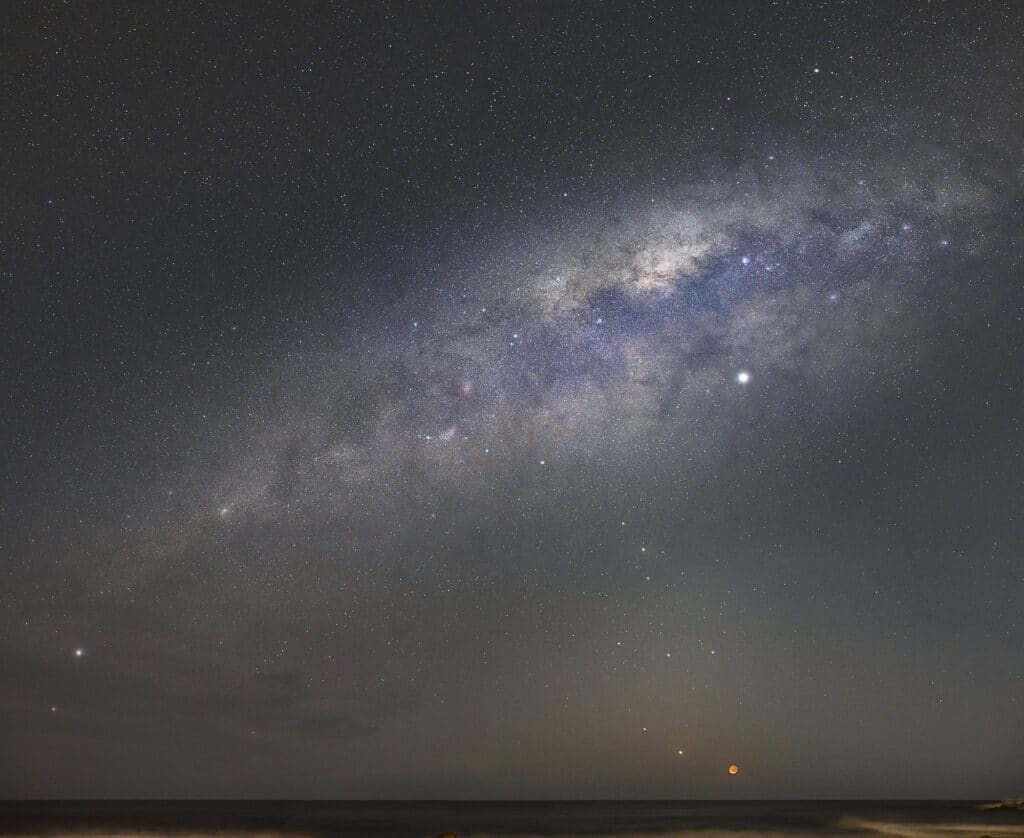The Astronomy Photographer of the Year competition, organized by the Royal Museum Greenwich, rewards the best astrophotographers from around the world. This year, the competition is open for submissions starting January 11. We take a closer look at this fascinating discipline which is much more democratic than you might think!
Andromeda as you’ve never seen it before: this photo won first prize in the 2020 Astronomy Photographer of the Year competition. There is something intimate about the Andromeda galaxy that seems almost to fit into the palm of your hand, you only need to reach and grab it. This glittering, mesmerizing spiral, however, is some 2.5 billion light years from the Sun. Its thousand billion stars are anything but a miniature bauble. And yet, seen through Nicolas Lefaudeux’s lens, our celestial neighbor seems almost tangible.

In order to compose this innovative snapshot of the world’s most photographed galaxy, Nicolas Lefaudeux used his imagination and printed some elements in 3D. His daring approach won over the jury. Because, if you want your photograph to stand out among some 5,000 projects submitted every year, you must know how to tell stories spun in the skies above us. In a sense, this is a continuation of space exploration by other means. Straddling science and art, astrophotography reveals the secret poetry of even the most familiar celestial bodies.
Take the Moon, for example: we would be wrong to think our gray satellite holds few mysteries. Observed through Frenchman Alain Paillou’s telescope, it reveals a plethora of colors and a complexity of composition. The photographer worked eight years to obtain this picture of the Tycho Crater.

Another colorful surprise: a lilac sun captured using a specialized telescope, which admits only a restricted spectrum of light, close to ultraviolet. This pastel-colored picture of tranquility is surprising in a star known for its warm colors and plasma eruptions.
While some of the winning photos were taken by seasoned astrophotographers using advanced telescopes, you don’t need professional equipment to take beautiful pictures of the sky. Nor do you need years of experience to catch the eye of the jury. Alice Fock Hang, aged 10, won the “Young” category with her Nikon D610 shot of Venus, Mercury, Jupiter, Saturn, and the Moon, executed with perfect scientific accuracy and artistic flair. The young photographer said she had waited months to obtain this particular conjunction, until the magic moment when the zodiacal light came to illuminate her composition. This perfect combination of astronomical knowledge and aesthetic sensibility is what jurors look for in participants, young and seasoned alike.

Telescopes aside, the Moon reclaims its folkloric countenance: this fairytale full moon is conjured up in Kirsty Paton’s Big Moon, Little Werewolf. Except that the werewolf whose silhouette is outlined against the lunar light is none other than the photographer’s dog. This is a gentle nod to legends and myths which, before the progress of science and space observation, brought the movements of the celestial bodies a bit closer to our lives.

One of the most spectacular celestial phenomena is undoubtedly the Northern Lights. It is a great privilege for photographers to capture them, but also a great challenge: how to create an original interpretation of a phenomenon so vividly present in the collective imagination? Perhaps by integrating a solitary tree into the frame, standing unmoved before the grand display of lights.

Some of the prize-winning photos give an impression of everlasting stillness, of eternity, which could lead one to think that space observation is unaffected by human activity, a peaceful practice we are free to indulge in even when we have destroyed earthly flora and fauna… Nothing could be farther from the truth. The winner in the “Humans and Space” category shows us how satellite light trails litter the sky. In their wake, satellites leave what looks like prison bars that separate us from the stars. Rafael Schmall thus makes us think about the future of astrophotography: what if man-made satellites continue to multiply in Earth’s orbit?
By Joy Majdalani
Joy Majdalani is a Paris-based editor and Lebanese content creator. She specializes in technology, art, culture, and social issues.
Discover the winners of the 2020 edition over here
To participate in the Astronomy Photographer of the Year competition, submit your entry before March 5, 2021.


